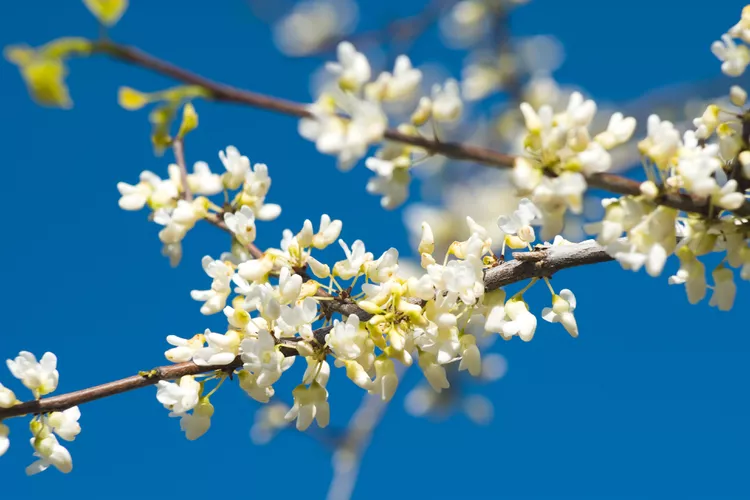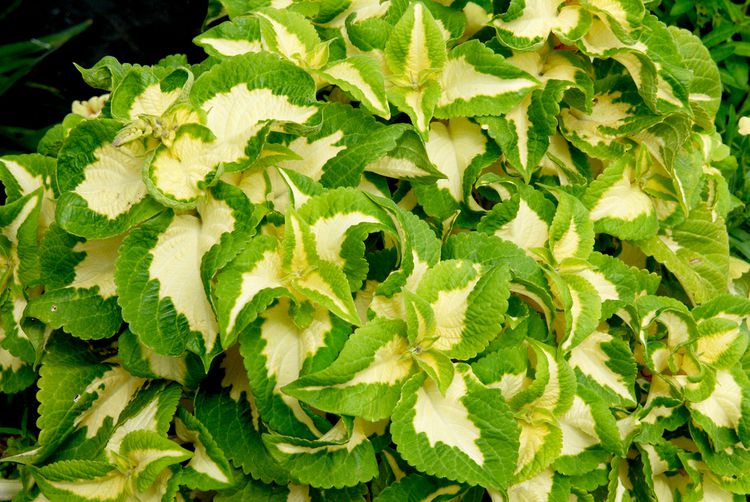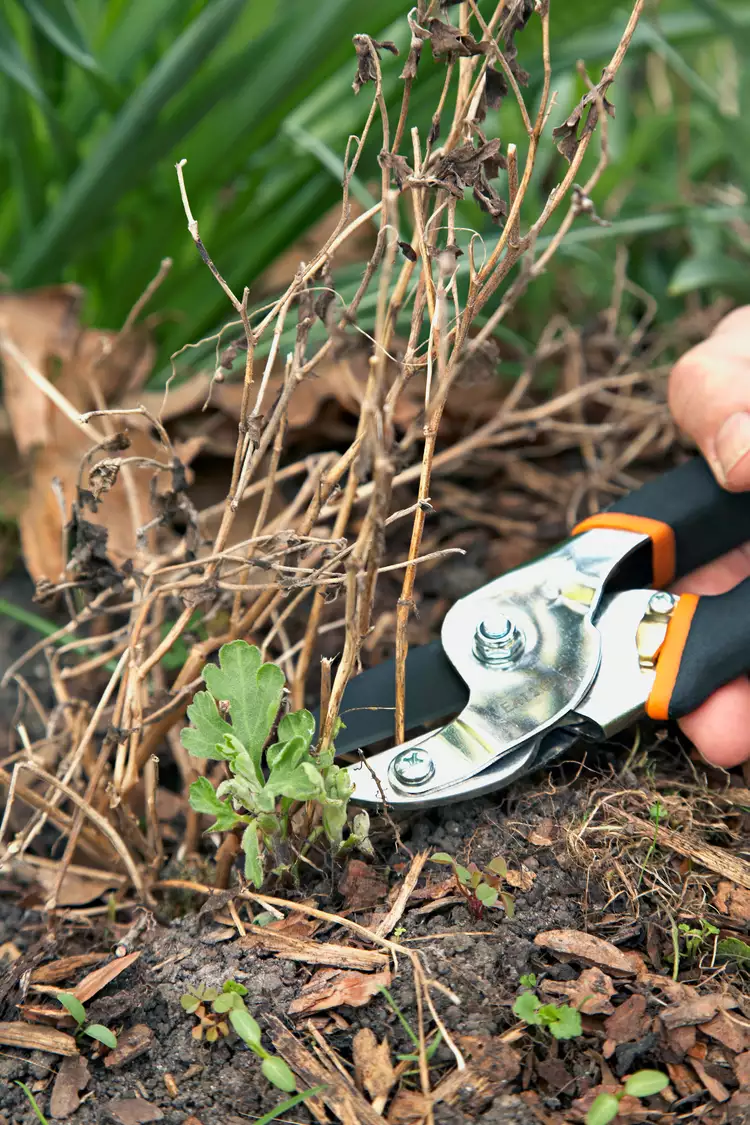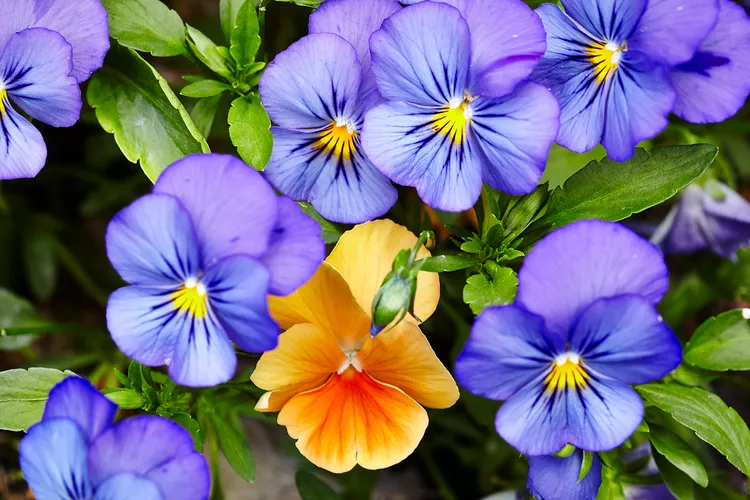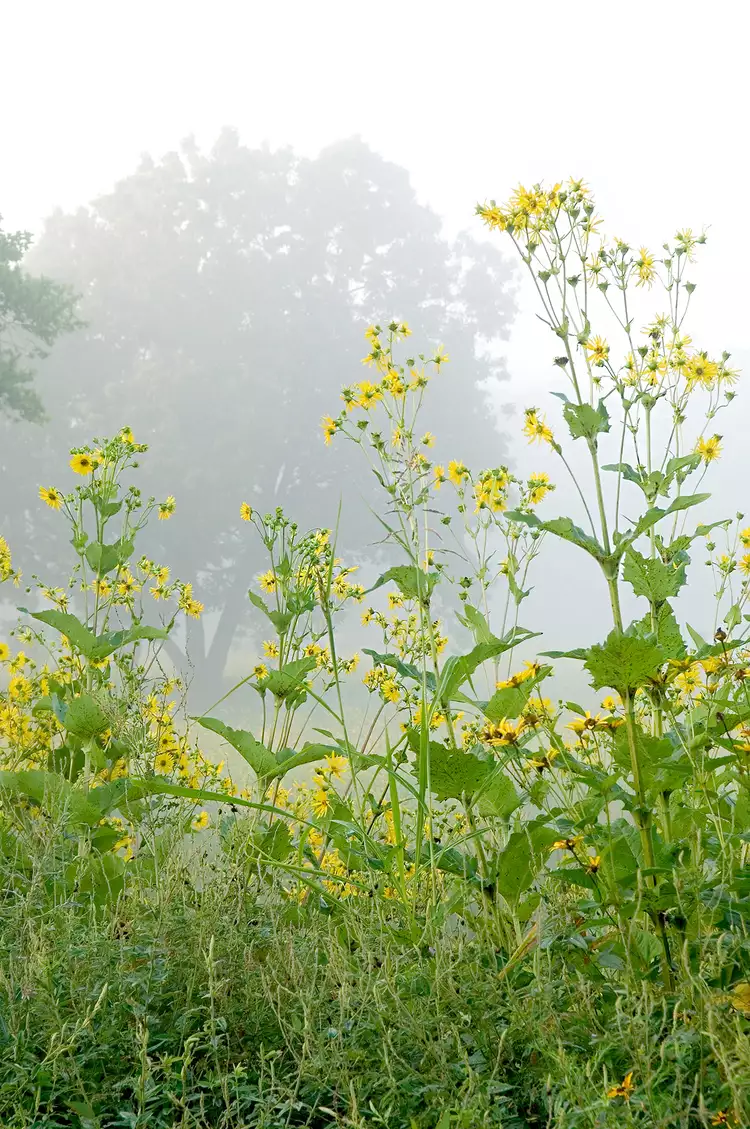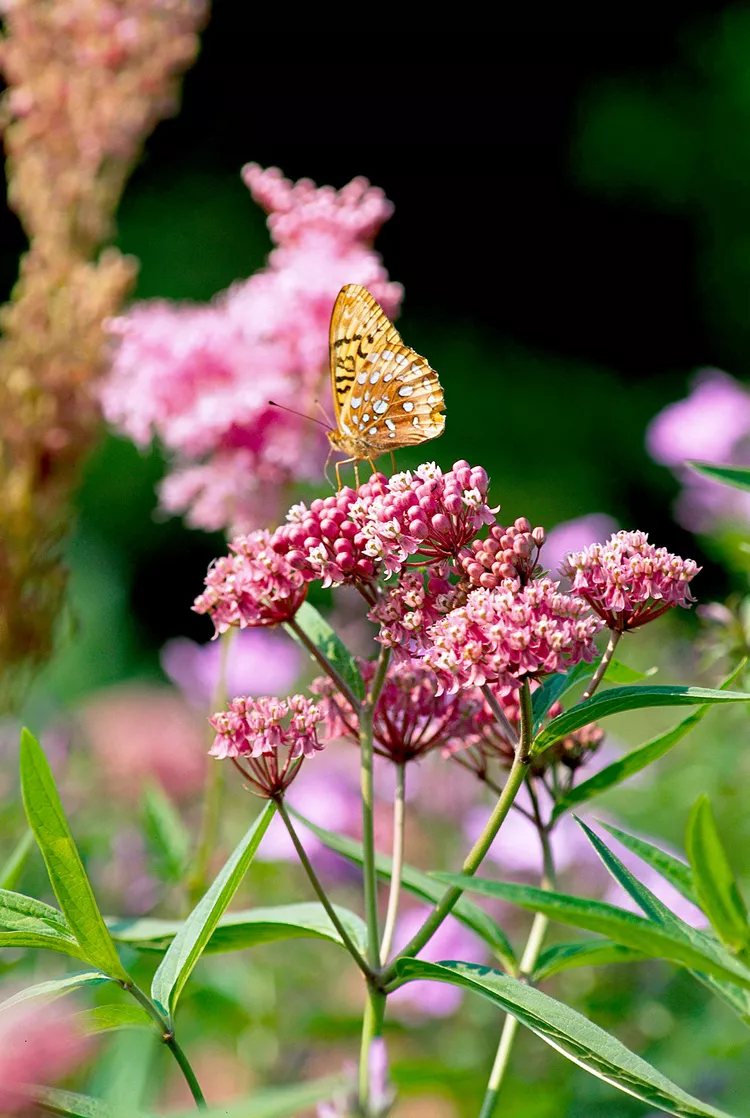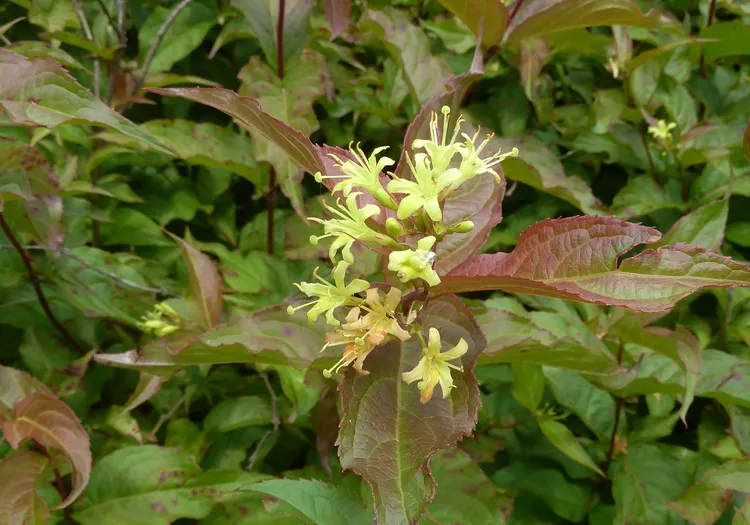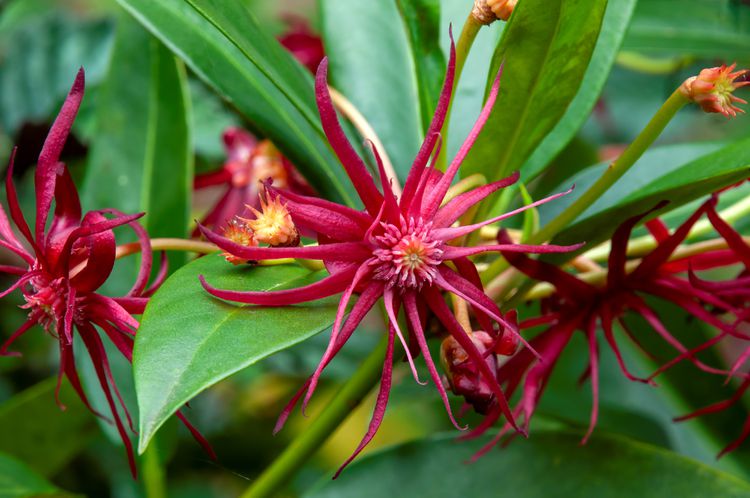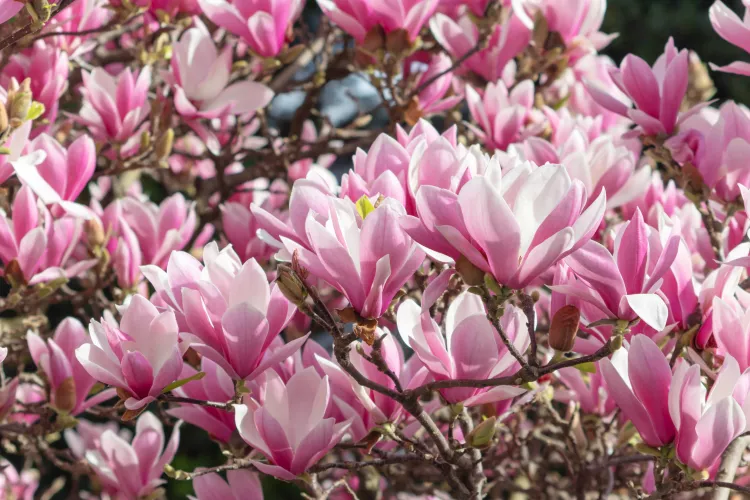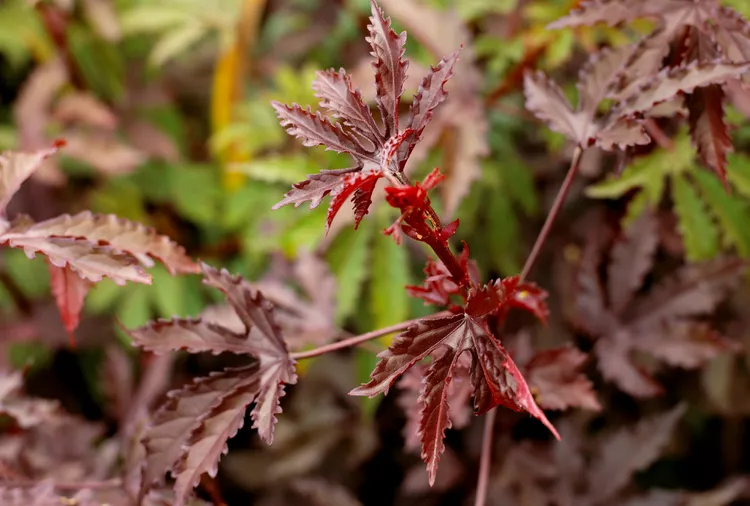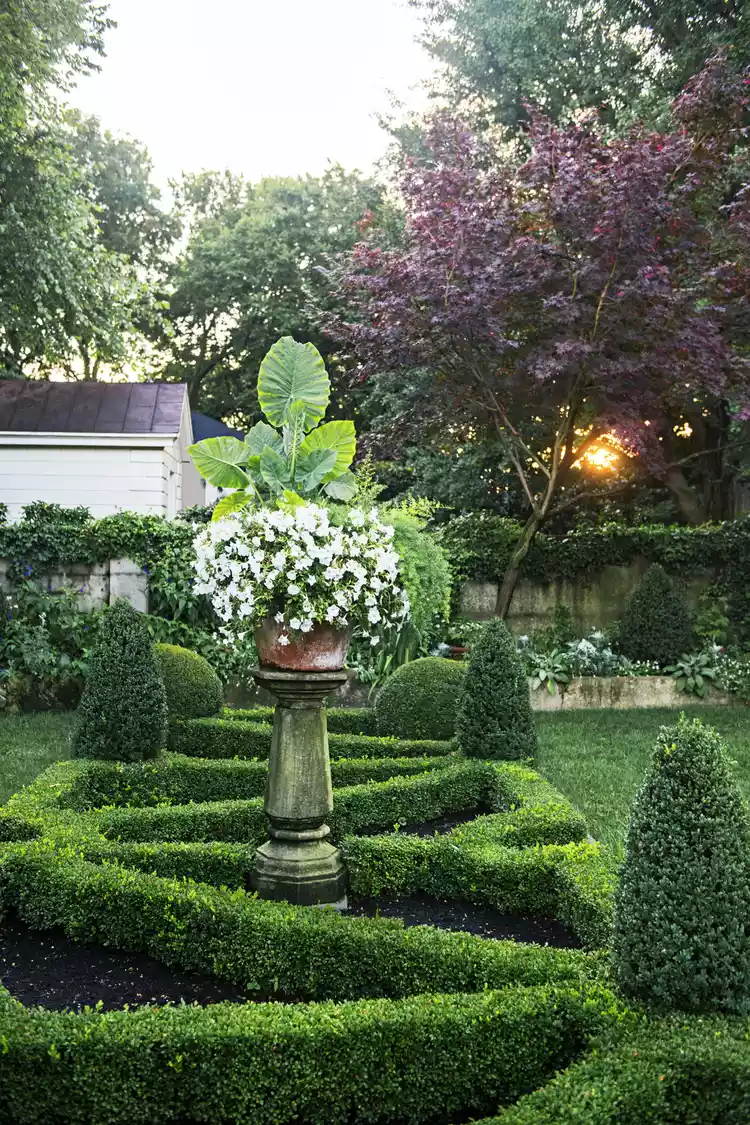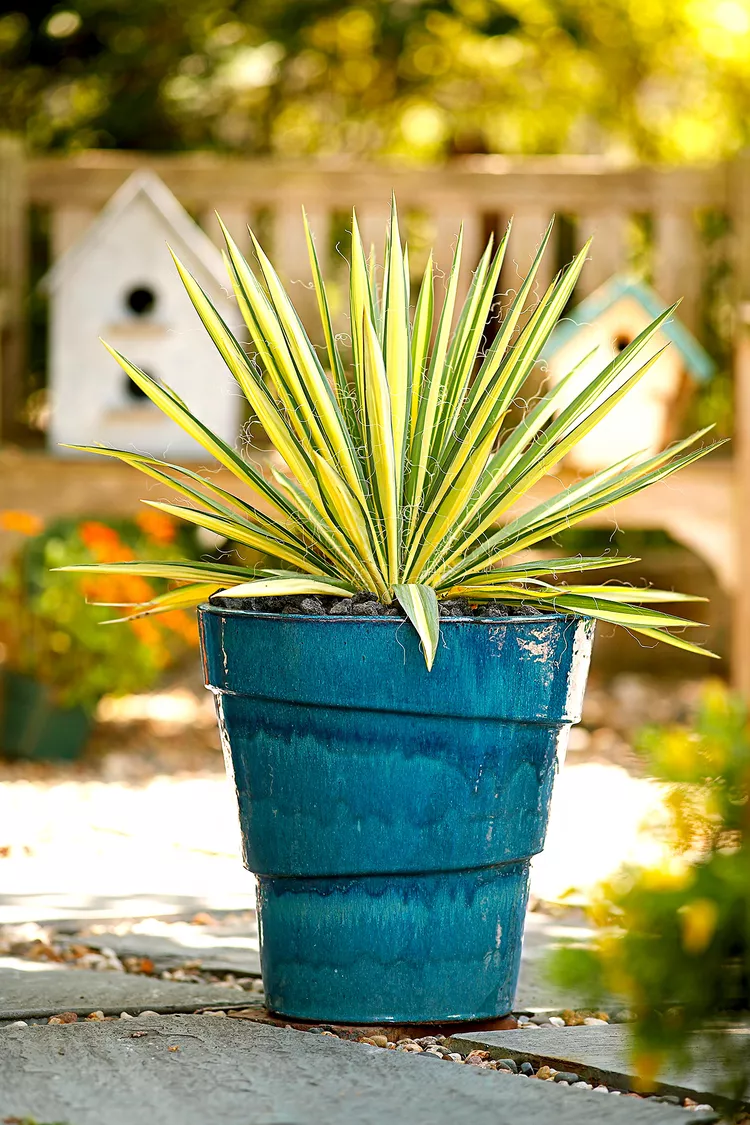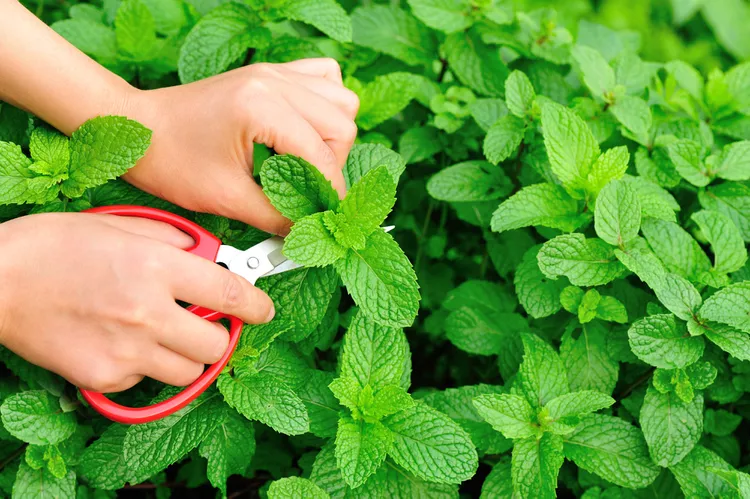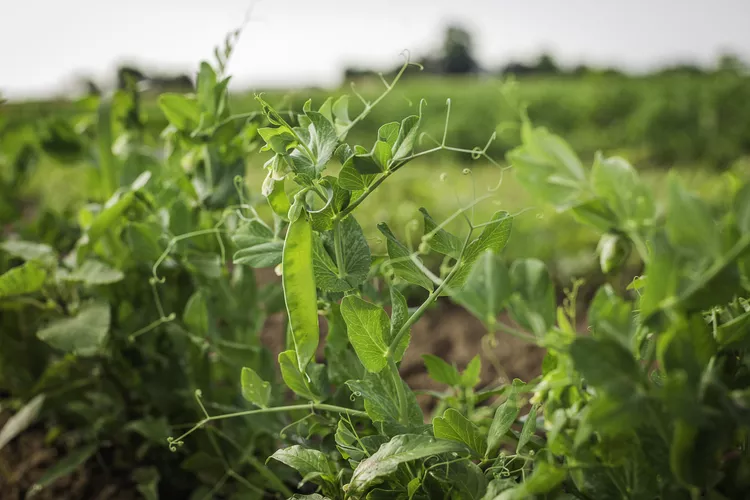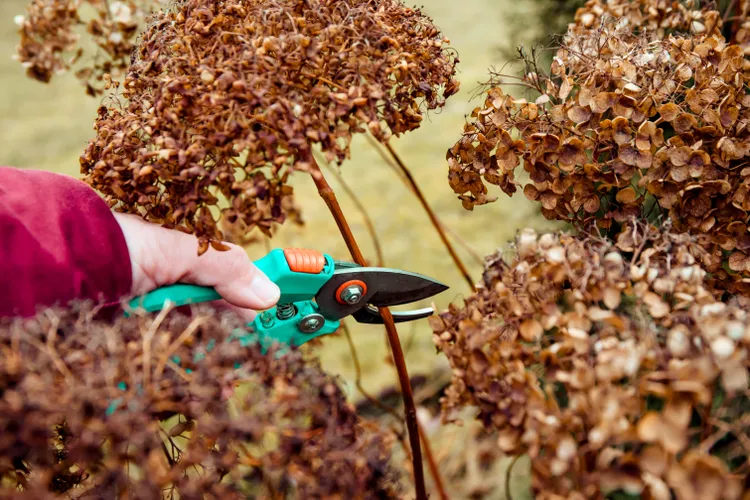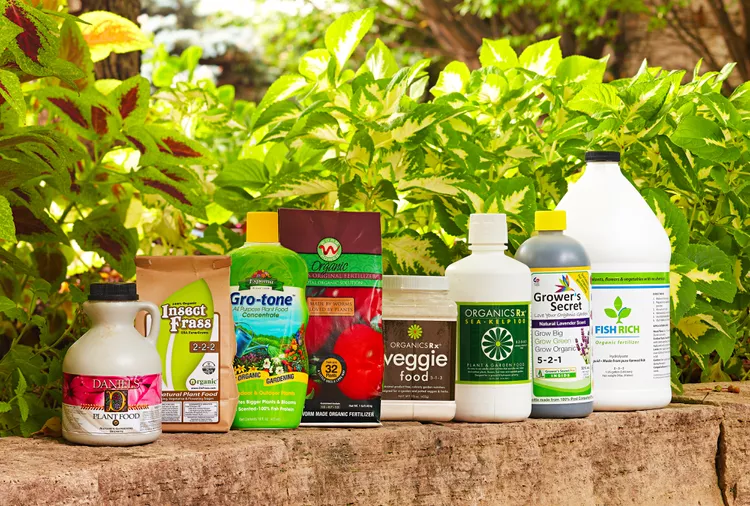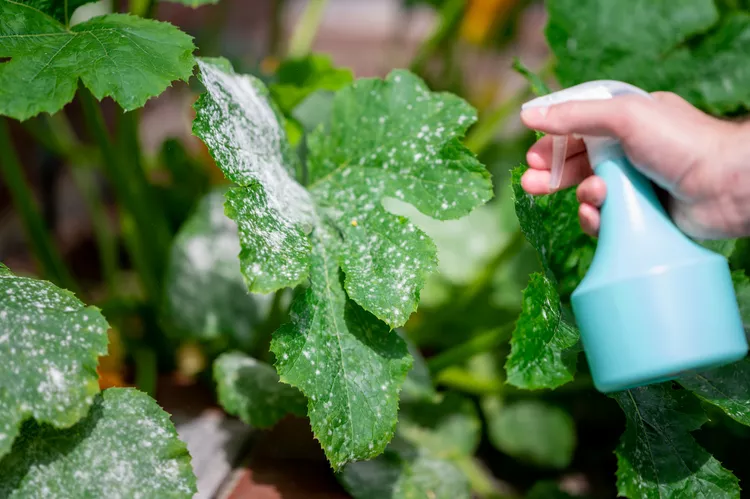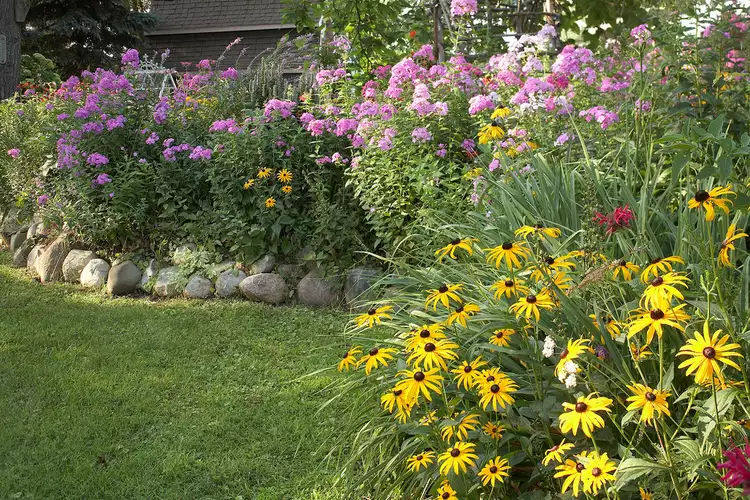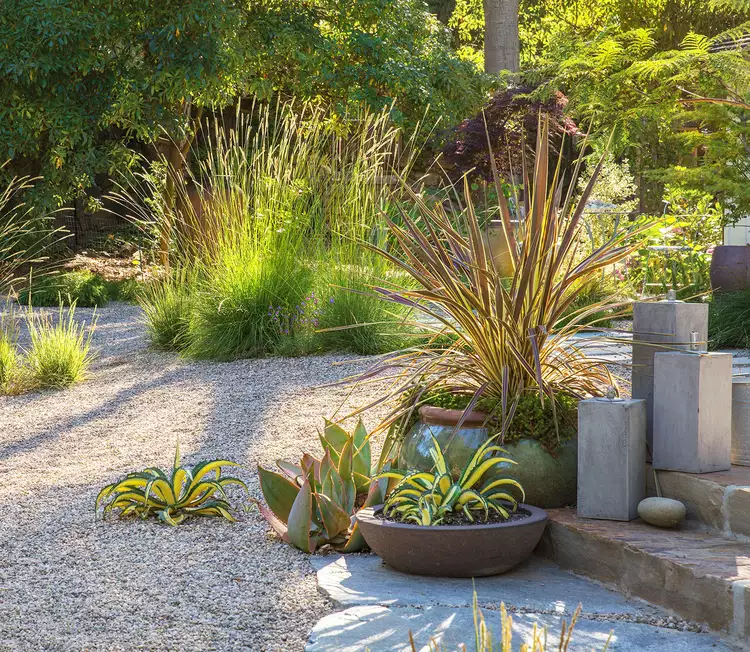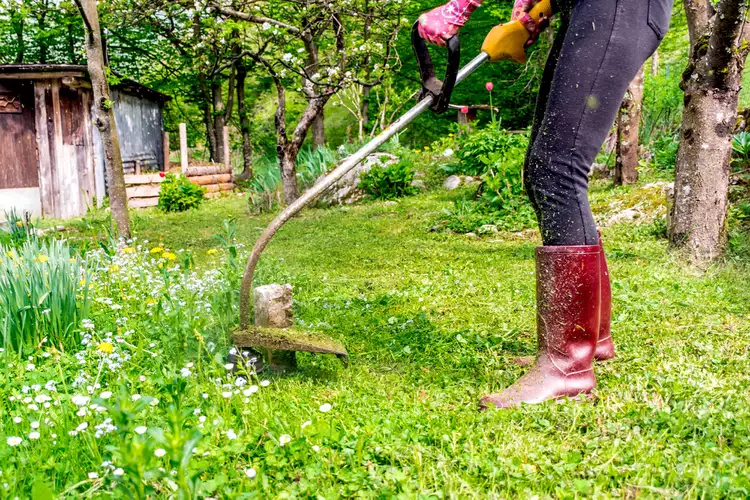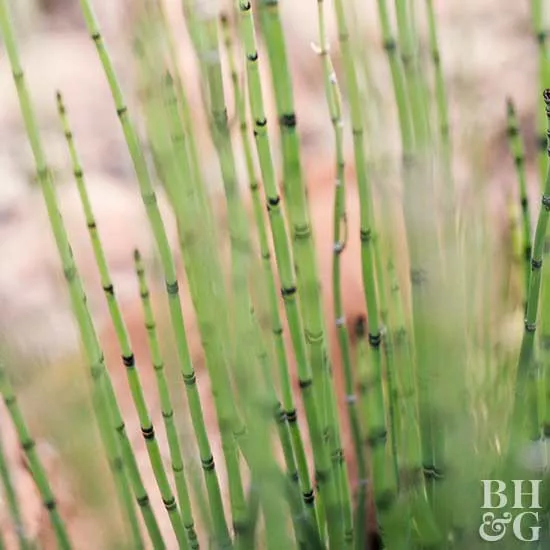Trees with white flowers are often seen as harbingers of spring. Fortunately, many of these flowering trees are native to North America and perform well throughout the continental United States. So, no matter where you live, there are trees with white flowers to plant in your yard. Many of these easy-to-grow trees not only produce an abundance of white blooms but also display gorgeous fall colors. Below, you’ll find white flowering trees of all shapes and sizes that create an eye-catching landscape—while also welcoming pollinators and other beneficial wildlife.
Southern Magnolia
A symbol of the South and cherished throughout the world for its glossy green leaves and fragrant white flowers, the Southern magnolia (Magnolia grandiflora) is a sight to behold. Reaching upwards of 70 feet, these stately trees with white flowers need room but give an impressive display when full-grown. For locations with less room, try the smaller cultivar ‘Little Gem’ that only reaches about 20 feet. Both the Southern magnolia and it's 'Little Gem" cultivar are best suited for USDA zones 7-10.
Flowering Dogwood
If you need trees with white flowers that are suited for wet locations in your yard, flowering dogwood (Cornus florida) might be a good choice. This gorgeous, eye-catching tree is hardy in zones 5-9 and climbs to about 15 to 30 feet. It bears sweeping branches full of fragrant white flowers in spring and red fall berries that are popular with birds and other wildlife.
Serviceberry
Native to the eastern half of the United States, serviceberry (Amelanchier arborea) is a small tree that looks great when planted en masse or as a single specimen. Often grown with multiple trunks in zones 4-9, the small tree with white flowers follows its spring bloom with abundant dark purple fruits. But don’t worry about a mess—this tree is a bird magnet. Birds will pick a serviceberry tree clean well before it gets the chance to drop its fruit to the ground. For compact yards, check out the cultivar ‘Standing Ovation', which grows only 15 feet tall (as opposed to 20 to 40 feet tall).
Carolina Silverbell
This tree with white flowers deserves a far greater following. With bell-like blooms that rival cherry trees, the Carolina silverbell (Halesia carolina) is a small to medium tree that thrives in zones 4-8. When grown in full sun (or part shade) and well-drained, organically rich soil, it's rarely impacted by disease. Aside from an occasional touch-up, Carolina silverbells never need pruning to maintain their form.
Ohio Buckeye
Ohio buckeyes (Aesculus glabra) demand attention when in full bloom. The state tree of Ohio produces creamy white flowers in spring followed by large, dark brown nuts. Topping out around 40 to 60 feet, this beautiful tree needs room to grow. It's also pretty messy, so it is not recommended for planting around homes. But, in zones 3-7, this tree shines in a large yard with plenty of space.
The bark, nuts, and foliage of the Ohio buckeye tree are considered toxic to humans, dogs, cats, livestock, and other mammals.
Yellowwood
Growing to a maximum height of 55 feet or so, this legume (related to beans and peas) produces large clusters of extremely fragrant panicles of pea-like flowers in late spring followed by seed pods and bright yellow leaves in the fall. Because of its small size and excellent perfume, yellowwood (Cladrastis kentukea) is a good choice for planting near decks and patios where they can be fully appreciated. It's best grown in zones 4-8.
White Eastern Redbud
Similar to the standard pink-flowered form, the white Eastern redbud has a profusion of small flowers that cover its branches, giving it an almost tropical effect. Eastern redbuds (Cercis canadensis f. alba) can be grown in zones 4-9 and are perfect for smaller lots. Up close, its white spring flowers and heart-shaped blue-green leaves can be better enjoyed throughout the growing season.
Fringe Tree
The fringe tree (Chionanthus virginicus) is a sight to see when in full bloom. With its clustered flowers and thousands of long, white petals, a full-grown fringe tree bears an almost smoky white effect. The fringe tree is another small but wide tree with white flowers that blooms in late spring or early summer. It requires plenty of space to fill out and prefers full sun to part shade in zones 3-9. Maintenance for fringe trees is basically non-existent, and they can even withstand air pollution and thick soils where other trees might struggle.
Franklin Tree
If you’re looking for a rare white flowering tree, look no further than the Franklin tree (Franklinia alatamaha). Named after Benjamin Franklin, this flowering beauty is native to Georgia and grows upwards of about 20 feet tall. Unlike most trees with white flowers, Franklin trees typically bloom from midsummer to first frost. The tree, which looks like a white camellia, can be grown either with a single trunk or multiple. It thrives in zones 5-9 but unfortunately, is no longer found in the wild.
Catalpa
If you’re looking for a large, whimsical tree for a large yard, the catalpa might just be what you’re looking for. Catalpas (Catalpa speciosa) produce huge, light-green leaves and conspicuous white, orchid-like flowers in late spring to early summer followed by long, bean-like pods. Plant these large, fast-growing trees where they can show off their leaves, flowers, and twisted branches from a distance in zones 4-8.
